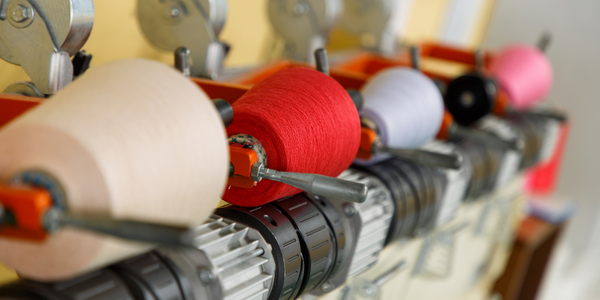Technology Category
- Application Infrastructure & Middleware - Data Exchange & Integration
- Wearables - Watches, Gloves & Wrist Computers
Applicable Industries
- Apparel
- Marine & Shipping
Applicable Functions
- Procurement
- Warehouse & Inventory Management
Use Cases
- Picking, Sorting & Positioning
- Time Sensitive Networking
Services
- System Integration
- Testing & Certification
About The Customer
Vincero is an affordable watch brand that was launched with the aim of providing quality watches at reasonable prices. The brand is targeted towards young customers, providing them with a confidence booster. The common reaction from customers is amazement at the quality of the watch for the price. Vincero's business was international, with about 35% of its business coming from outside the country. The company had a small team of around ten people when it started working with Skubana. Despite its size, Vincero was managing six to eight to nine warehouses at a time.
The Challenge
Vincero, an affordable watch brand, was facing challenges as it scaled beyond its comfort level. The company was expanding into new regions, channels, volumes, and categories, which was proving to be a distressing experience. The company was also dealing with the complexities of managing multiple warehouses and fulfilling orders internationally. The customs processing varied in every country, and Vincero, with a small team of around ten people, did not have the resources to learn all the tax rules and customs processes in every single country. Additionally, the company was heavily reliant on Amazon for sales, but this was not leading to customer loyalty or valuable customer information. Furthermore, Vincero was dealing with the issue of fake returns from Amazon.
The Solution
Vincero turned to Skubana, a tool that helped them streamline their sales channels, automate orders and vendor workflow, and provide product and order analytics. Skubana's multi-warehouse functionality was a significant attraction for Vincero as it allowed them to utilize different warehouses, including Amazon's. This helped Vincero cut down on shipping costs and times for customers to get their products. Skubana also integrated Vincero with Global-e, which helped with international shipping. Skubana's order bot hierarchy allowed Vincero to optimize how quickly customers could get products and how they could manage their inventory. Skubana also helped Vincero become less reliant on Amazon by allowing them to reroute their stock with a few clicks. This saved Vincero countless hours on shipping and a significant amount on customs fees and shipping time.
Operational Impact
Quantitative Benefit

Case Study missing?
Start adding your own!
Register with your work email and create a new case study profile for your business.
Related Case Studies.

Case Study
Fire Alarm System and Remote Monitoring Sytem
Fire alarm systems are essential in providing an early warning in the event of fire. They help to save lives and protect property whilst also fulfilling the needs of insurance companies and government departments.Fire alarm systems typically consist of several inter-linked components, such as smoke detectors, heat detector, carbon monoxide, manual call points, sounders, alarm and buzzer. The fire alarm system should give immediate information in order to prevent the fire spread and protect live and property.To get maximum protection a shoe manufacturer in Indonesia opted for a new fire alarm system to monitor 13 production sites spread over 160 hectars. Although the company had an existing fire alarm system, it could not be monitored remotely.It was essential that the new system would be able to be monitored from a central control room. It needed to be able to connect to the existing smoke detector and manual call point. Information should be easily collected and passed on to the Supervisory Control and Data Acquisition (SCADA) system. Furthermore, the system should have several features such as alarm management, auto reporting, being connected to many client computers without additional cost, and run 24/7 without fails. The company also needed a system which could be implemented without changing the architecture of the existing fire alarm system.

Case Study
IoT Applications and Upgrades in Textile Plant
At any given time, the textile company’s manufacturing facility has up to 2,000 textile carts in use. These carts are pushed from room to room, carrying materials or semi-finished products. Previously, a paper with a hand-written description was attached to each cart. This traditional method of processing made product tracking extremely difficult. Additionally, making sure that every cart of materials or semi-finished products went to its correct processing work station was also a problem. Therefore, the company desired an intelligent solution for tracking assets at their factories. They also wanted a solution that would help them collect process data so they could improve their manufacturing efficiency.

Case Study
Drill ship power challenge: hybrid solution solves distribution issues
Aspin Kemp & Associates (AKA), a manufacturer of electrical power and control systems headquartered in Montague, PEI, encountered one with its hybrid power initiative, the first hybrid drill floor destined for installation on ultra-deepwater drill ships operated by Transocean, Swiss offshore drilling contractors. Since on-site modification was impossible and scrap recycling of any modifications was unacceptable, the enclosures had to arrive ready-to-install.

Case Study
Retailer Uses RFID Scanner to Improve Efficiency
Patrizia Pepe wished to improve the logistics of their warehouse: accepting incoming goods from their production sites, movement of items throughout
the warehouse, and packaging of goods for distribution to the retail locations. They initially tried to use barcodes for this function. Because barcodes must be individually scanned within a line-of-sight, the acceptance of goods coming into the warehouse was too time consuming. Working with the University of Florence, Patrizia Pepe instituted a five-month pilot project beginning in August of 2009 to test the validity of an RFID solution. The pilot involved tagging of about 60,000 items for the second seasonal collection, and convinced the company to move forward with tagging all items.

Case Study
Monitoring and Controlling Automatic Mixing and Dispensing Machines
As technology advances, textile manufacturing has been transformed from a labor-intensive to a partially or fully automated industry. Automation is significant in all segments of textile production - from spinning to printing, and textile machinery manufacturers are constantly searching for new technologies and automation processes will increase the productivity of their machines. The color paste mixing and dispensing machine is an essential part of the printing and dyeing process. With the advantage of automatically computerized controls and database management, the system can significantly improve its dispensing precision, working efficiency and production quality as well as reducing material consumption.








